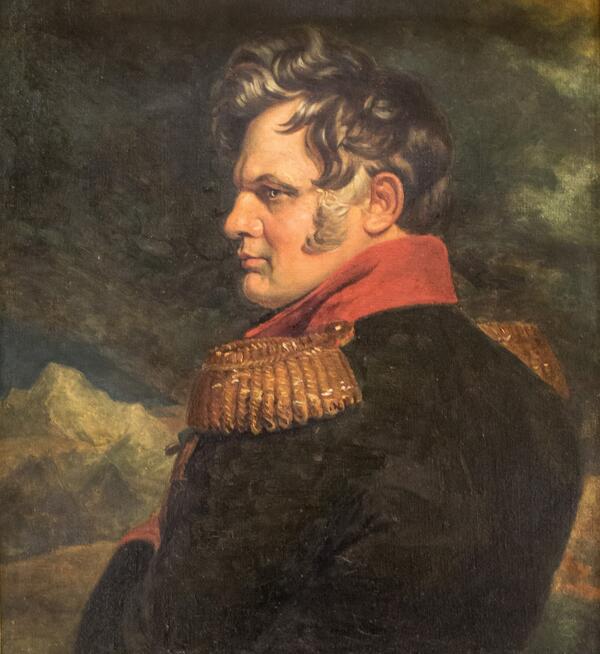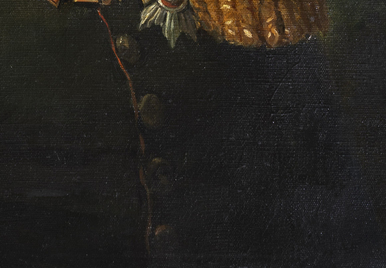Aleksey Petrovich Yermolov was a nobleman from the Oryol Governorate. In 1787, he was enlisted in the Preobrazhensky Life Guards Regiment. Four years later he was transferred as a captain to the Nizhny Novgorod Dragoon Regiment. He took part in the Polish and Persian campaigns.
In the wars with France in 1805 and 1806–1807, he commanded horse artillery companies. In 1806 he was promoted to colonel, and in 1808 to major general. In June 1812, Aleksey Yermolov was appointed Chief of the General Staff of the 1st Western Army. He participated in all its battles and later received the rank of lieutenant general for the Battle of Valutino.
In the Battle of Borodino, Yermolov led a counterattack on the Raevsky redoubt captured by the enemy. He was wounded. During the Council at Fili, he spoke in favor of engaging in battle near Moscow. From December 1812, he commanded all artillery troops of the Russian army.
From 1813 to 1814, he led the 2nd Guards Infantry Division, the 1st Guards Infantry Division, and the entire Foot Guards successively. In 1815 he was appointed commander of the Grenadier Corps, and in 1816 — commander-in-chief in Georgia, commander of a Separate Georgian (later Caucasian) Corps.
In 1818, Aleksey Yermolov was promoted to infantry general. The military commander was suspected of having ties with the Decembrists. In 1827, he was discharged from the military with the right to wear his uniform and receive a full state pension. In 1831, he was re-enlisted and appointed a member of the State Council.
In 1837, Yermolov became artillery general, and in 1839, at his request, he was dismissed “on sick leave”. During the Crimean War of 1853–1856, in 1855, he led the militia of the Moscow Governorate.
The portrait of General Aleksey Yermolov is considered one of the best works of George Dawe, a prominent English romantic artist. The canvas vividly reveals the individuality and independent character of the military commander.
The artist depicted him in profile, standing almost with his back to the viewer, against the backdrop of the Caucasus Mountains, where Yermolov commanded the Separate Corps at that time. He wears a general’s military uniform of the 1817 model. The pose does not allow one to see the orders. The presented reproduction from the collection of the Borodino Museum-Reserve was made in 1960 in the Studio of Military Artists named after Mitrofan Grekov.


